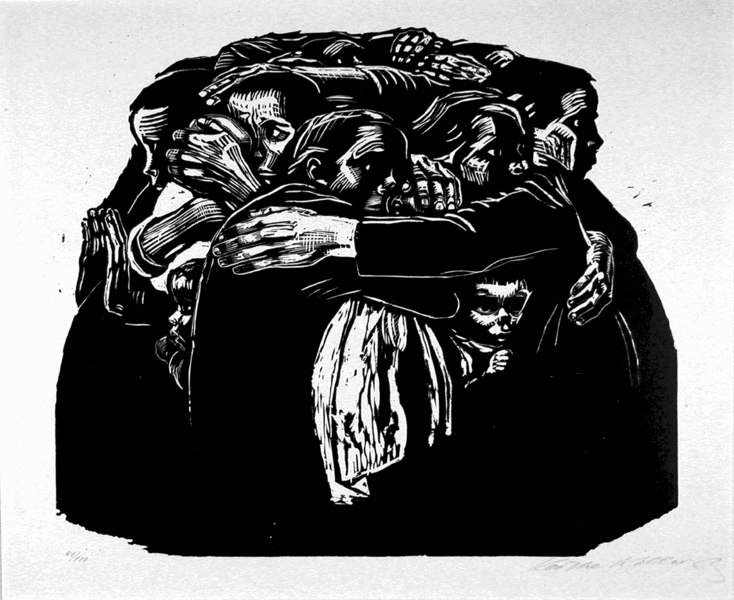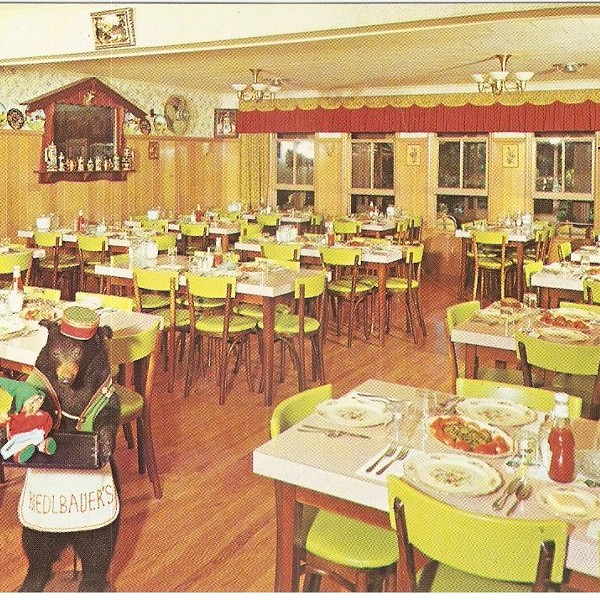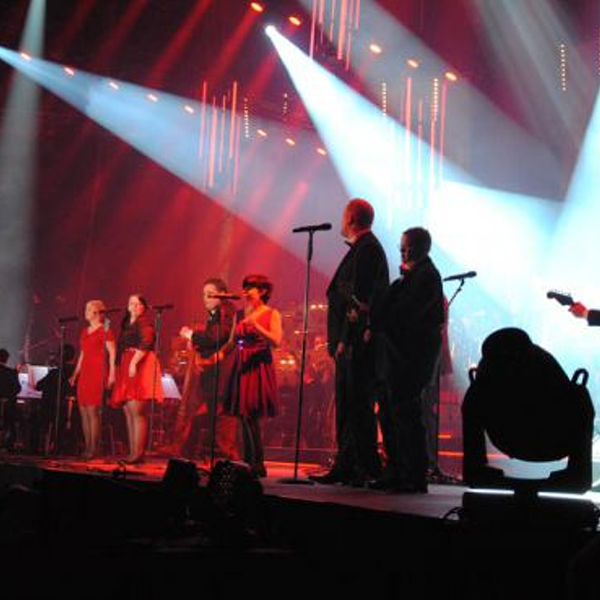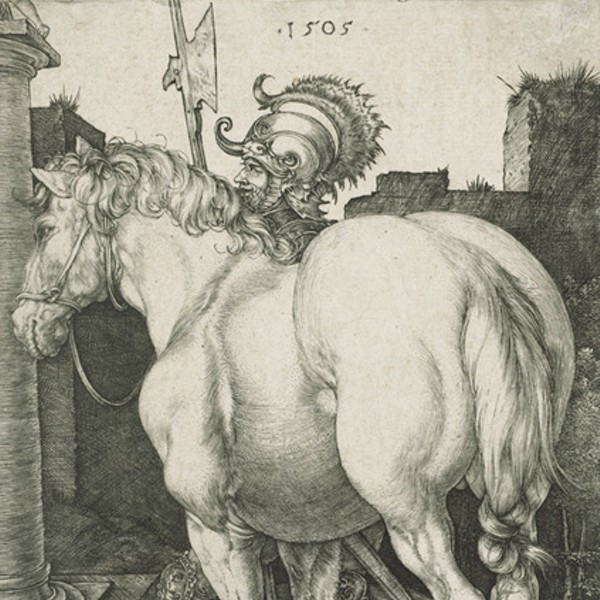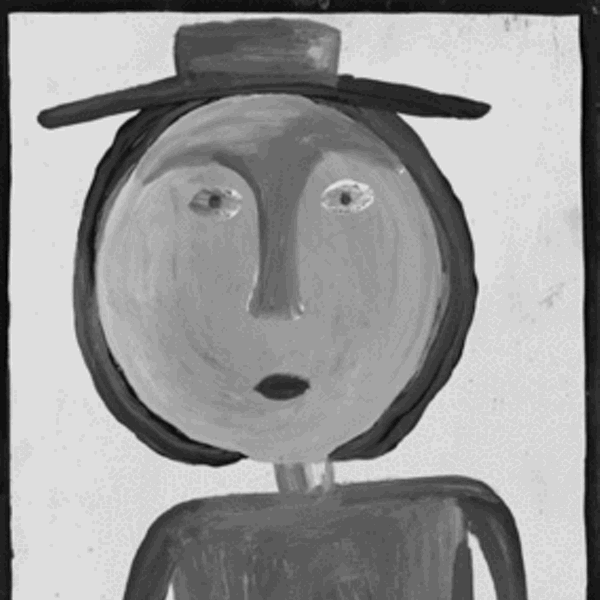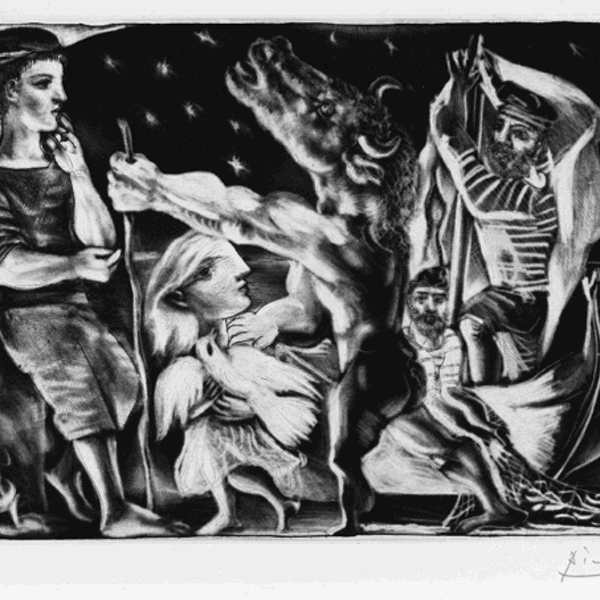As Nosferatu crept his long-nailed fingers around the frame of the doorway in F. W. Murnau’s 1922 film of the same name, little did the vampire realize that he was ensconced in an influential artistic movement. German Expressionism sought to change society with the power of art—its surreal and exaggerated artistic forms were a rebellion against the constraints of a materialistic society. Though the early-20th-century movement is primarily associated with film, expressionism began with painting and emerged in many art forms: sculpture, literature, drama, stage design, dance, and woodcut. Woodcuts from the movement will be exhibited at Vassar College’s Frances Lehman Loeb Art Center from August 22 though October 26 in “Impassioned Images: German Expressionist Prints.”
The exhibit begins chronologically, with images from the first expressionist community to emerge in Germany in 1905 Berlin, Die Brücke (The Bridge), a name that indicated the group’s faith in the art of the future, which their work would provide passage toward. The group of mostly self-taught artists—founded by Ernst Ludwig Kirchner, Erich Heckel, and Karl Schmidt-Rottluff—sought inspiration from primitive art, in particular, the woodcut. Their dramatic color contrasts and bold, simple forms often blended foreground figures with the backgrounds, defying academic standards of craftsmanship and traditional ideas of illustration. “So many of these artists did rebel and confront what they considered to be a stifling society, so they felt compelled to create worlds that were lively and vital and rebellious,” explains Patti Phagan, the Philip and Lynn Straus curator of prints and drawings at the Loeb. A prime example of the style of this group is the bold and abstract Head of a Woman (1916), Schmitt-Rotluff’s black-and-white woodcut on wove paper in which a woman’s face “has been reduced to a set of crude geometric shapes—a tribal mask rather than a portrait,” as described by critic John McDonald.
As the exhibit progresses, it features works from Die Brücke’s successor, Der Blaue Reiter (Blue Rider), which lasted until the beginning of World War I. Founded primarily by Wassily Kandinsky and Franz Marc, artists in the movement were not as united stylistically as a group than Die Brücke. Their art ranged from the colorful abstractions of Kandinsky (The Archer, 1908) to the romantic imagery of Marc. But all the artwork produced in this group maintained the focus of expressing spirituality through art.
The exhibit concludes with works from two groups that merged after the war in 1919, the Arbeistrat fur Kunst (Working Council for Art) and Novembergruppe (November Group), as well as the group Neue Sachlichkeit (new objectivity). The artists in these movements, affected by their personal wartime experiences and societal upheaval, often depicted urban and industrial scenes. Images from these groups include workers shaking their fists (George Grosz, Life after World War I), and a huddled crowd of frightened mothers, produced after the artist’s son was killed in World War I (Käthe Kollwitz, Mothers, 1922). In response to these images, expressionism and almost all modern art was suppressed by Hitler’s Third Reich in the 1930s, as the “degenerate art” was seen as a propaganda tool of an inferior race.
“Impassioned Images,” a traveling exhibit from Syracuse University, will be on display at the Frances Lehman Loeb Art Center August 22 until October 26. An opening reception will be held on Friday, September 5. Following the reception will be a lecture by Barbara C. Buenger, a specialist in 20th-century German art history. (845) 437-5632; http://fllac.vassar.edu.







